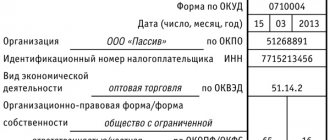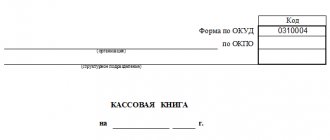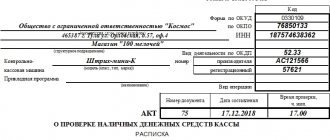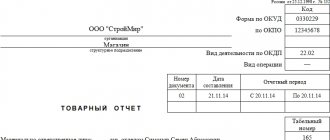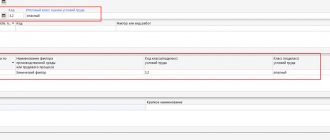What are cash and cash equivalents?
Cash and cash equivalents include all cash and highly liquid assets with short maturities (typically 90 days or 3 months). This item is always classified as current assets on line 1250 of the balance sheet.
Cash equivalents include bank accounts and marketable securities, which are debt securities with maturities of less than 90 days.
However, cash equivalents often do not include shares or shareholdings because they can fluctuate in value.
Examples of cash equivalents include commercial paper, Treasury bills, and short-term government bonds with maturities of three months or less. Marketable securities and money market assets are considered cash equivalents because they are liquid and not subject to significant fluctuations in value.
Financial investments on the balance sheet: definition, list
Contrary to the opinion of some accountants, the following assets cannot be accepted by an organization for accounting as financial investments:
- Own shares of the enterprise that were purchased from shareholders with the purpose of their cancellation or resale;
- material assets purchased for purposes other than normal activities, such as works of art, jewelry, precious metals, etc.;
- bills issued as payment for sold goods, products, works or services issued by the drawer to the seller;
- investments in real estate that have a tangible form and are transferred by the company on a reimbursable basis to other persons for temporary possession (use);
- fixed assets, intangible assets and various types of inventories.
The assets listed below, on the contrary, are full-fledged financial investments, the value of which can be recorded on line 1170 (subject to the requirements from the list following the list):
- municipal and state securities;
- securities of other companies, including debt - bills of exchange, bonds (provided that they indicate the cost and maturity date);
- receivables repurchased in connection with the assignment of claims;
- contributions to the authorized (share) capital of other companies (including subsidiaries and affiliates);
- bank deposits;
- loans issued to other companies;
- other similar investments.
Assets and investments can be accepted for accounting as financial investments only if all the following conditions are met:
- The enterprise must retain documents proving the fact of making a financial investment in the object.
- The investing company must have certain financial risks related to the acquired income-generating assets.
- There must be a probability that financial investments will bring economic benefits in the future in its various forms (in the form of dividends, an increase in the initial cost, etc.).
Concept and understanding of the category
Cash and cash equivalents are a group of assets owned by a company. For ease of understanding, this is the total value of cash on hand and cash-like assets. If a company has cash or cash equivalents, the totality of these assets is always shown on the top line of the balance sheet. This is because cash and cash equivalents are current assets, which means they are the most liquid of the short-term balance sheet items.
Important! Companies with significant amounts of cash and cash equivalents may have a positive view of their ability to meet short-term debt obligations.
How to reflect financial investments in accounting
Important! Before information about current financial investments is reflected on line 1170 of the Balance Sheet, their value is collected in account 58 “Financial Investments”. At the same time, deposits must be accounted for in subaccount 55.3 “Deposit accounts” of account 55 “Special accounts in banks”. Interest-bearing loans issued to employees of an organization can be reflected in account 73 “Settlements with personnel for other operations” (subaccount 73.1 “Settlements on loans provided”).
If a company has made financial investments in securities, the following information about them must be reflected in analytical accounting:
- full name of the issuer of securities;
- price of securities;
- details, name of the paper;
- the total number of securities purchased;
- storage location for purchased papers;
- the date of purchase of the asset and the day of their disposal.
No matter what accounts information about investments is generated, financial indicators will always be reflected on line 1170 of the balance sheet.
Difference between cash and cash equivalents
The key differences are presented in the table below.
| View | Characteristics and distinctive features |
| Cash | Cash in the form of currency. They include all bills, coins and banknotes. |
| Cash equivalents | For an investment to qualify as equivalent, it must be readily convertible into cash and be subject to negligible value risk. Therefore, an investment usually qualifies as a cash equivalent only if it has a short maturity, say three months or less. |
The importance of using these categories
There are several main reasons why these categories are significant. They are reflected in the table below.
| No. | Cause | Characteristics and description | Clarification |
| Source of liquidity | Cash equivalents are held to satisfy short-term cash obligations and not for investment or other purposes and are an important source of liquidity. Thus, companies want to have a cash cushion to withstand unforeseen situations such as revenue shortfalls, equipment repairs or replacements, or other unforeseen circumstances not budgeted for. | Liquidity ratio calculations are important in determining the rate at which a company can pay off its short-term debt. Various options for liquidity ratios include: total liquidity ratio, current ratio, quick ratio. Total liquidity ratio: (cash and cash equivalents + marketable securities) ÷ current liabilities Current ratio: current assets ÷ current liabilities. Quick ratio: (Current asset - stock) ÷ Current liabilities. | |
| Speculative acquisition strategy | Another good reason for saving is an acquisition in the near future. | As an example, consider the cash balance on Apple Inc's balance sheet: · Cash = $13.844 billion · Total assets = $231.839 billion Cash as % of total assets = 13,844 / 231,839 ~ 6% · Total sales in 2014 = $182,795 Cash as % of Total Sales = 13,844 / 182,795 ~ 7.5% Investments of $13.844 billion (cash) + $11.233 billion (short-term investments) + $130.162 billion (long-term investments) amount to $155.2 billion. The combination of all this indicates that Apple may be looking for some kind of acquisition in the near future. |
Pros and cons of availability
Positive aspects of having:
- maturity and ease of conversion. They are beneficial from a business perspective because a company can use them to meet any short-term needs;
- financial repository. Retained equity is a way of storing money until a business decides what to do with it.
Negative aspects of having:
- loss of income: sometimes companies set aside an amount in equivalents that exceeds the amount needed to cover immediate obligations, depending on market conditions. When this happens, the company loses potential income because money that could have generated higher profits elsewhere has been transferred to a cash account;
- low yield: many equivalents have yield. However, the interest rate is usually low. A low interest rate makes sense given that equivalents are low risk.
The most common options and types
Cash and cash equivalents help companies in meeting their working capital needs as these liquid assets are used to pay off current liabilities, which are short-term debts and bills.
Cash is money in the form of currency and includes all bills, coins and notes.
A demand deposit is a type of account from which funds can be withdrawn at any time without notifying the institution. Examples of demand deposit accounts include checking and savings accounts. All demand account balances at the date of the financial statements are included in total cash.
Foreign currency. Companies holding more than one currency conduct transactions such as currency exchange. Currency for foreign countries must be converted into reporting currency for financial purposes. The conversion must provide results comparable to those that would have occurred if the business had completed operations using only one currency. Foreign currency revaluation losses are not reflected in cash and cash equivalents. These losses are reflected in a separate document.
Cash equivalents are investments that can be easily converted into cash. Investments must be short-term, usually with a maximum duration of three months or less. If the investment period exceeds 3 months, it should be classified in an account called “other investments”. Cash equivalents must be highly liquid and easily traded in the market. Buyers of these investments must be easily accessible.
All cash equivalents must have a known market price and should not be subject to fluctuations in value. The value of cash equivalents cannot be expected to change significantly prior to maturity.
Certificates of deposit may be considered cash equivalents depending on their maturity date.
Preferred shares may be considered cash equivalent if they are purchased close to the maturity date and are not expected to fluctuate significantly in value.
List of actual expenses for the acquisition of assets as financial investments
The accounting records of an enterprise must necessarily contain information about the expenses actually incurred by the company in connection with the need to acquire assets in the form of financial investments. Only the following costs may be included in such costs:
- The amount paid to the seller in accordance with the purchase and sale agreement at the time of purchase of an asset that is planned to be accounted for as a financial investment.
- Expenses for the services of intermediaries involved in the transaction of purchase and sale of an asset acquired as a financial investment.
- Costs for paid services of lawyers and experts who are ready to advise the company on financial investments on a paid basis. If, after the organization paid for information (consulting) services, management decided that it was inappropriate to make a financial investment:
- non-profit organizations include such costs in the increase in expenses of the reporting period, during which it was decided not to invest in the purchase of an asset as a financial investment;
- commercial firms include costs for “unused” consultations and information resources as other expenses.
- Other costs that are directly related to the purchase of assets taken into account as financial investments.
Important! At least once a year, an enterprise is required to check its financial investments for impairment (as of December 31 of the reporting period) if signs of impairment are detected. In addition, studies can be scheduled for interim reporting dates. If, based on the results of the audit, a significant decrease in the value of financial investments is established, it is necessary to create an impairment reserve. The amount of the reserve is determined by deducting their estimated value from the initial cost of financial investments.
What cash and equivalents do not include
There are some exceptions for current assets and current assets classified as cash and cash equivalents.
Credit collateral. Exceptions may exist for short-term debt instruments such as Treasury bills if they are used as collateral for an outstanding loan or line of credit. Prohibited T-bills must be identified separately. In other words, there may be no restrictions on the conversion of any of the securities listed as cash and cash equivalents.
Inventories. The inventory that a company has in stock is not considered cash equivalent because it cannot be easily converted into cash. In addition, the value of inventory is not guaranteed, meaning there is no certainty as to the amount that will be received for the liquidation of these assets.
Line 1230 “Accounts receivable”
This line 1230 is intended for short-term receivables, that is, repayment of which is expected within 12 months after the reporting date. The following debts are included in accounts receivable:
- buyers for goods supplied to them, services provided, work performed;
- suppliers for advances transferred to them;
- accountable persons for the money given to them;
- budget and extra-budgetary funds for overpayments of taxes or contributions, etc.
Accordingly, in line 1230 enter the debit balance of accounts for accounting for settlements: 60 “Settlements with suppliers and contractors”
,
62 “Settlements with buyers and customers”
,
68 “Settlements for taxes and contributions”
,
69 “Settlements for social insurance and security”
, etc.
Attention!
All companies (including small enterprises) are required to create a reserve for doubtful debts in their accounting. It is reflected in the credit of account 63 “Provisions for doubtful debts”. Therefore, the amount of receivables must be shown in line 1230 minus deductions to the reserve. Thus, it is necessary to add up the debit balance of accounts 62, 60, 76 and others. Next, subtract the credit balance of account 63 from the amount received.
Calculation example
Example No. 1. For example, suppose that the opening balance of the cash account was 10,000 rubles, the total amount of debits for the year was 15,000 rubles, and the total amount of credits for the year was 8,000 rubles.
Let's add each account's total debit to its opening balance. For example, let's add 15,000 tr. to the total amount of debits to the initial balance on the cash account of 10,000 tr., which is equal to 25,000 tr.
We subtract the total number of credits of each account from each result to calculate the year-end balance for each account.
For example, we subtract 8,000 rubles. in the total amount of loans on the cash account from the result of 25,000 tr. This equals a final cash balance of 17,000 rubles.
We will calculate the ending balance of each account to determine the balance at the end of the year in cash and cash equivalents.
For example, if the year-end balances for cash, wages, petty cash investments and money market investments are respectively 17,000, 5,000, 1,000 and 4,000 TR, then their amount should be calculated. It is equal to 27,000 tr. as the balance of cash and cash equivalents at the end of the year.
Indicate the balance of cash and cash equivalents at the end of the year in line 1250 of the balance sheet in the current assets section.
A practical example of company cash accounting
The DomTechno store performed the following financial transactions on December 31, 2017: sales of goods in cash at the store’s cash desk in the amount of 50 thousand rubles, by bank transfer - in the amount of 75 thousand. rubles Payment to the suppliers of goods was made through a bank account, the transfer amount was 250 thousand rubles. A refund was also made to the buyer through a bank account in the amount of 5 thousand. rubles and received a refund of over-transferred funds from the supplier in the amount of 25 thousand rubles.
At the beginning of the day, the cash balance in the cash register was 15 thousand rubles, in the bank account - 350 thousand rubles.
Business transactions in accounting:
50,000 rubles – payment was received from customers at the cash register during the day.
75,000 rubles – receipt of customer payments to the bank account.
250,000 rubles - money written off as payment to suppliers.
5000 rub. – return to the buyer.
25,000 rub. – supplier return.
At the end of the working day, the amount in the cash register is: 15 thousand + 50 thousand = 65 thousand rubles.
At the end of the working day, the balance in the current account is: 350 thousand + 75 thousand – 250 thousand + 25 thousand – 5 thousand = 195 thousand rubles.
The organization does not have other accounts (including foreign currency ones), there are no open deposits. In this regard, in the financial statements for 2017, line 1250 will indicate an amount of 260 thousand rubles.
What can increase cash on the balance sheet?
Companies can increase cash through increased sales, collection of overdue accounts, control of expenses, and financing and investment. These options are reflected in the table below.
| Growth option | Characteristic |
| Sales growth | Increased sales usually mean higher levels of cash on the balance sheet. When a company makes a cash sale, the accounts must increase the sales account on the income statement and the cash account on the balance sheet. When it receives cash payments on credit accounts, the company converts the amounts from accounts receivable to cash. Innovative and quality products, targeted marketing and superior customer service are some of the ways to consistently achieve higher sales and gain a competitive advantage in the market. |
| Accounts receivable management | Some sales are cash and others are on credit. The accounts receivable balance in the current assets section of the balance sheet contains outstanding credit accounts. Although a business may receive most payments during the billing period, some bills are past due while others are not due for collection. More stringent credit control procedures, such as reducing credit limits for customers who have fallen behind in the past or waiving loans to customers experiencing financial difficulties, can reduce the number of overdue accounts and increase cash flow. Sending automatic email reminders, following up with overdue customers, and offering discounts for early payment of invoices are some of the other ways to manage accounts receivable and increase cash on your balance sheet. |
| Cost control | Controlling expenses increases cash levels. Sales growth is an important but not sufficient condition for increasing cash flow. For example, if a five percent increase in sales requires a seven percent increase in marketing spending, cash levels may actually decrease rather than increase. Companies incur variable costs such as direct labor and raw materials. The companies also recorded overhead costs such as administrative staff salaries and advertising. Negotiating better terms with suppliers and adjusting production shifts to accommodate rising or falling demand are ways to manage variable costs. Streamlining business processes, reducing travel, and using contractors instead of in-house employees are some ways to reduce overhead costs. |
| Financing and investment activities | Companies can increase cash levels through financing and investing. Financing activities include proceeds from bank loans and from issuing shares or bonds to investors. For small businesses that may not have easy access to financial markets, an infusion of cash from founding partners, venture capitalists and angel investors will increase cash on the balance sheet. Paying dividends and interest from investments in stocks and bonds also increases cash levels. Selling excess capital investments, such as regional offices, distribution centers, excess equipment or unused vehicles, increases cash on the balance sheet. |
| Other | Other ways to increase cash include selling investments in subsidiaries or spinning off business units. |
Procedure for filling out the Balance Sheet
The form of the Balance Sheet was approved by Order of the Ministry of Finance of Russia dated July 2, 2010 No. 66n.
1 The Balance Sheet line codes are indicated in accordance with Appendix 4 to Order No. 66n of the Ministry of Finance of Russia dated July 2, 2010. The column with codes must be added to the balance sheet form yourself when submitting reports to Rosstat or other executive authorities. For example, to the tax office. This conclusion follows from paragraph 5 of Order No. 66n of the Ministry of Finance of Russia dated July 2, 2010.
2 If the indicators for accounts 07 and 08 are significant, then they are not reflected in the line “Other non-current assets”. The organization indicates the corresponding amounts on separate lines of the balance sheet, which it enters independently.
3 When issuing advances related to the construction of fixed assets, the repayment of the cost of which is carried out within a period exceeding 12 months, the amounts of advances are reflected in Section I “Non-current assets” (letter of the Ministry of Finance of Russia dated April 11, 2011 No. 07-02-06/ 42).
4 Non-profit organizations section III of the balance sheet is called “Targeted Financing”. And it includes the indicators “Unit Fund”, “Target Capital”, “Target Funds”, “Fund for Real Estate and Especially Valuable Movable Property”, “Reserve and Other Target Funds”. This is stated in Note 6 to the Balance Sheet, approved by Order of the Ministry of Finance of Russia dated July 2, 2010 No. 66n.
For the group of articles “Targeted funds”, non-profit organizations reflect:
- targeted funds not used as of the reporting date intended to support the main statutory activities (reflected in the Report on the targeted use of funds received);
- net profit (loss) from business activities generated during the reporting year and intended to finance the main statutory activities.
This procedure is given in paragraph 15 of the Information of the Ministry of Finance of Russia dated December 24, 2007.
5 If changes have already been made to the charter in the Unified State Register of Legal Entities, the balance sheet reflects the amount of authorized capital recorded in the constituent documents as of the reporting date. If changes to the charter have not yet been registered, the increase in the authorized capital should be reflected as a separate item in the “Capital and reserves” section of the Balance Sheet.
This is stated in the recommendations from the appendix to the letter of the Ministry of Finance of Russia dated February 6, 2020 No. 07-04-06/5027.
6 Own shares are reflected in the Balance Sheet in parentheses (without the minus sign).
7 The debit balance of account 84, meaning a loss, is shown in the liability side of the Balance Sheet as a negative (subtracted) value in parentheses (without the minus sign).
8 The organization must decipher indicators taking into account materiality. You can reflect interest on loans and borrowings in the same way as decoding the indicator in a separate line (1450 - for long-term loans and borrowings, in line 1520 - for short-term ones). The Russian Ministry of Finance recommends isolating interest (letter dated January 24, 2011 No. 07-02-18/01) and does not specify how to do this. At the same time, the received credits (loans) themselves are not income, and repayment of the principal debt is not an expense. Interest is an expense (clauses 3 and 11 of PBU 10/99).
FAQ
Question No. 1. What is included in cash?
Answer. These include such means as:
- money;
- currency;
- cash in current accounts;
- cash in savings accounts;
- bank amounts;
- Money transfers.
Question No. 2. What is considered cash equivalents?
Answer:
Answer. These include such means as:
- short-term government bonds;
- bills;
- securities;
- money market funds;
- treasury bonds.
Question No. 3. What are the main criteria for classifying cash and cash equivalents?
Answer. The two main criteria for classification as a cash equivalent are that:
- the asset can be easily converted into a known amount of cash;
- it must be so close to the maturity date that there is little risk of changes in value due to changes in interest rates at the time of maturity.
Question No. 4. In what situations is cash and cash equivalents analysis used?
Answer. Information about cash and cash equivalents is sometimes used by analysts in comparison to a firm's current liabilities to assess its ability to pay its bills in the short term. However, this analysis may be flawed if there are accounts receivable that can be easily converted into cash within a few days.
Question No. 5. What is included in cash?
Answer. In economic terms, cash is the form of exchange for all business transactions and activities of a company. In other words, it is a standard payment method for businesses. This is a banknote that is legal tender for all public and private debts.
Question #6 : Are certificates of deposit included in this category?
Answer. Yes, certificates of deposit are short-term securities that are easily converted into a known amount of money in a short period of time. Certificates of deposit are always included in cash equivalents.
Cash equivalents on the balance sheet: distinctive features
In the accounting policy of each individual organization, it is necessary to determine the approaches that determine the separation of DE from other types of financial investments.
It should be based on the following signs:
- DE are included in financial investments (account 58), but are listed in a separate, specially opened second-order subaccount.
- Short-term investment. DEs are highly liquid assets, so you can get income from their sale in a short period of time. The repayment period is specified in the company's accounting policy as a separate clause. But, as a rule, it is three months or less.
- The purpose of cash equivalents is to pay short-term obligations. Therefore, they do not include those deposits that are designed for long-term investment.
- Income from sales is predictable, and it is not difficult to determine it in advance. The value of DE remains almost unchanged.
Important! In its accounting policy, an enterprise has the right to designate an additional list of characteristics that separate DE from other types of assets. You just need to take into account that these criteria should not leave the limits of the established accounting rules.
Long-term investments cannot be classified as cash equivalents. If necessary, it is impossible to obtain them immediately. Accounts receivable are also not DE, since it is too difficult to predict the specific amount of payments.
| ★ Best-selling book “Accounting from scratch” for dummies (understand how to do accounting in 72 hours) > 8,000 books purchased |

